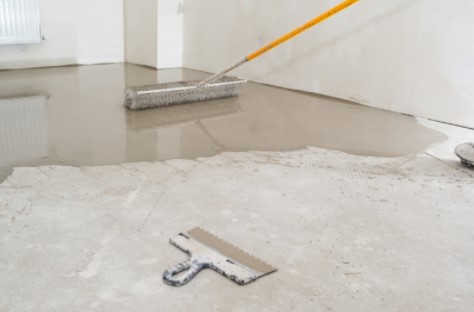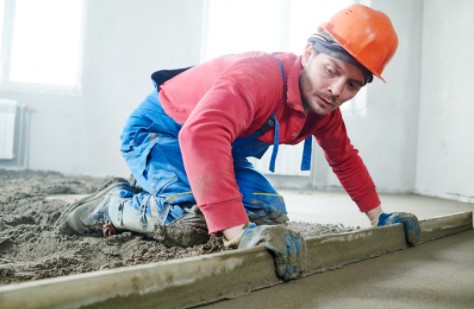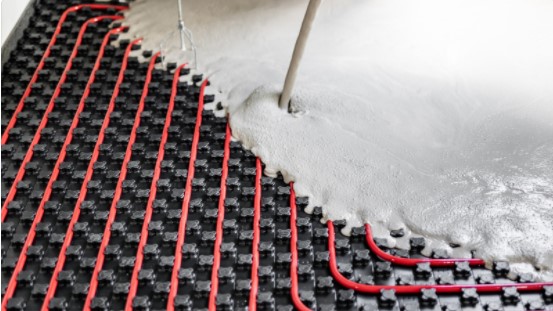Table of Contents
Are you struggling with uneven surfaces? Whether you’re looking to level new or existing floors, what better way to tackle the problem than by employing experienced liquid screed contractors in Oxfordshire?
But first – what is screed?
Screed is a thin layer of concrete. You pour this over a concrete floor (or underfloor heating pipes), to create a smooth level surface. It’s used in both commercial and residential properties before the final floor finish – be it tiles, vinyl, carpet, or wood flooring.
But, to get a professional finish, picking the right floor screed for the job is critical. There are many types of screed to choose from, including:
- Traditional screed
- Anhydrite flowing screed
- Rapid hardening screed
- Self-leveling screed
- Liquid screed

So, knowing which is best can be a little confusing if you’ve never used it before. This is especially true when you consider that not all screeds will suit every type of flooring!
While traditional screed is still great for many applications, liquid screed contractors in Oxfordshire have certainly shaken the industry with their innovative liquid screed alternative. So today we’re going to look at the critical differences between the traditional screed and liquid screed.
Traditional Floor Screeds vs Liquid Screeds
Traditional screeds – also known as sand and cement floor screed–contain sharp sand, cement, reinforced fibres, and water. Screeds like these are great for preparing floors ready for their desired finish. They are often the most economical option in today’s market.
From small-scale builders to larger commercial contracts and shopfitters, many industries have relied on traditional floor screed for many years.
On the other hand, modern liquid screed, whilst doing the same job, can dry much faster and is considerably less labor-intensive to apply when compared to the sand and cement counterpart. Here are some of the benefits of opting for liquid screed:
- It’s easier to apply
- It helps to reduce labor costs and the risk of damage – such as wheelbarrows harming door frames or underfloor heating pipes.
- It’s used to cover a large surface area quickly, liquid screed is an effective self-leveling and self-curing option that still results in a great level finish
- It dries quickly
- It’s ideal for keeping projects within budget and on time.
- It’s much less likely to shrink, making it an excellent choice for use with large stone tiles that could be more likely to crack under pressure.
Benefits of Traditional Screed
- It’s cheaper
- Minimal preparation is required
- It’s workable for 8-12 hours (in heavy traffic environments)
- It conforms to BS EN 13813 requirements
- It’s suitable for underfloor heating
- It can be pumped on site (if required)
- It suits all floor finishes

Benefits of Liquid Screed
- It’s quick-drying
- It boasts high compressive strength
- It’s less labor-intensive
- It’s not as prone to premature cracking/shrinkage
- Ther are reduced labor costs
- It’s suitable for underfloor heating
- It’s Self-curing (providing a level finish)
Before applying floor screed over large surfaces or installing underfloor heating, we suggest consulting a professional liquid screed contractor in Oxfordshire to ensure safety and efficiency.
Are You Torn Between Traditional Screed or Liquid Screed?
Unless you’re a professional contractor, it can be challenging to know what type of floor screed will do your home or workplace the most justice. However, suppose you are considering opting for liquid screed, in most cases. In that case, it’s much easier to go for a professional liquid screed contractor in Oxfordshire. They’ll carry out the job for you in a timely and professional manner, leaving you to enjoy the finished product without getting your hands dirty. So, if in doubt – contact the professionals!


